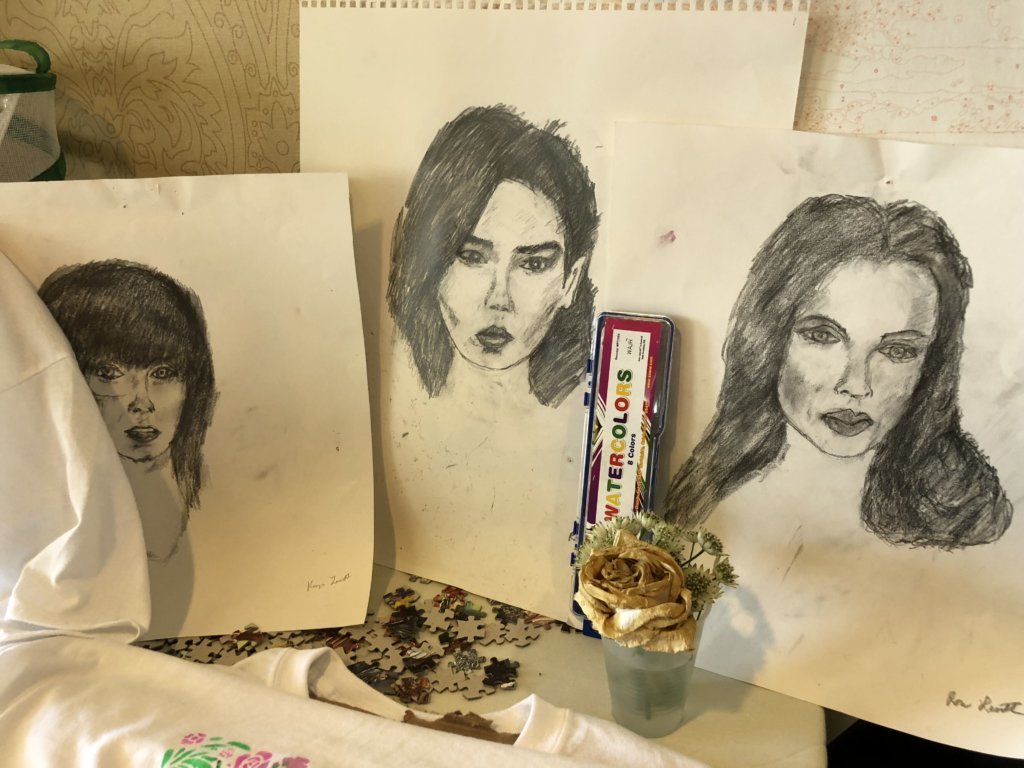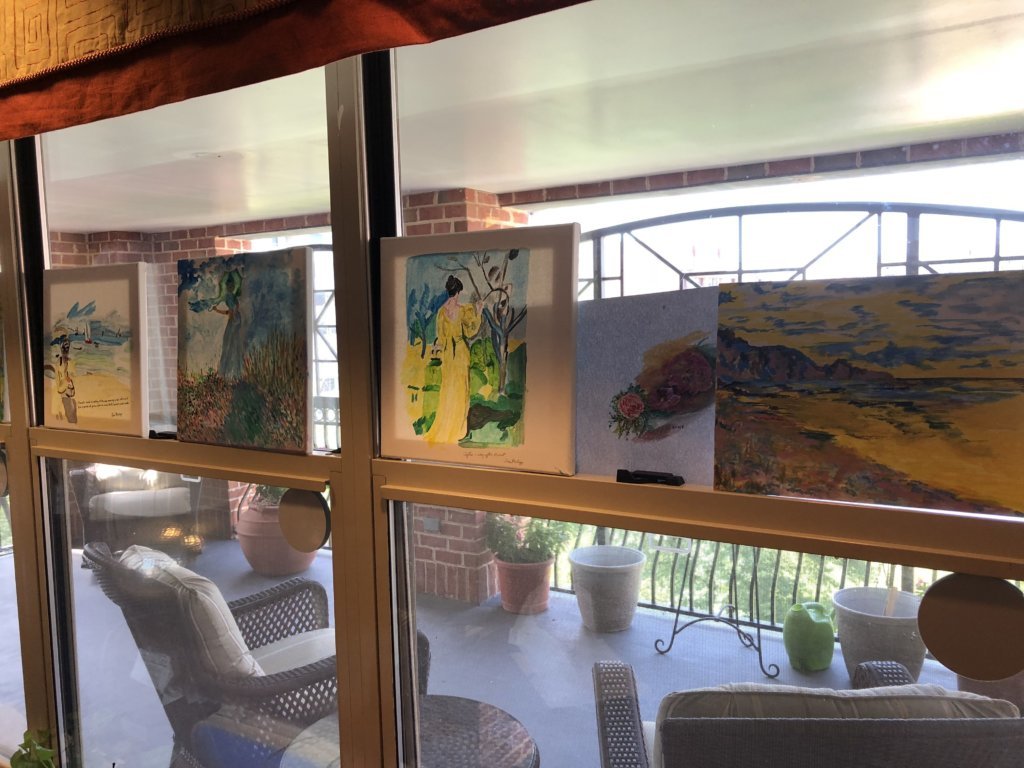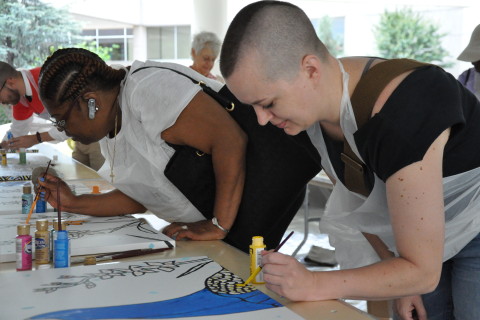WASHINGTON — Sue Philipp is under a lot of pressure these days.
On Sept. 20, she will make her debut as an artist when she showcases three paintings at a gallery opening in Silver Spring, Maryland.
But the exhibition isn’t exactly a lifelong dream of hers. At 89, Philipp has racked up a number of accomplishments, including newspaper writer and mother of three. She didn’t pick up a paintbrush until April 2018, and she did so as a way to help maintain her memory.
“And I do think my memory has improved,” Philipp said about her recent ventures in oils and acrylics.
Nearly every day, Philipp, a senior living resident at Brighton Gardens of Friendship Heights, joins a handful of other residents in a shared common room for a day of activities — ranging from art to trivia — all designed to help improve cognitive function for those displaying early signs of memory loss.
Erin Byrne leads the Live With Fulfillment group (dubbed “the forget-me-nots” by its members), and said the social environment of the program makes something as serious as memory loss much less scary.
“You can feel free to express yourself, feel free to be social, laugh about the fact that you forgot what you had for breakfast this morning and just be a part of something positive,” Byrne said.

Most days, Byrne bakes homemade bread for the residents; sometimes, she’ll show a Broadway musical and quiz the group on its storyline. On a recent Friday, she tested their knowledge on current events. A group of four painted and colored as they answered questions about the week’s news.
Byrne said she makes it a point to make art a prominent part of the program at least two days a week, since it helps with creativity and recall.
“Art is always something that can trigger things in your memory,” she said.
A study published in the Journal of Alzheimer’s disease shows that art can have an impact on those with dementia. Researchers found that “art therapy engages attention, provides pleasure, and improves neuropsychiatric symptoms, social behavior and self-esteem.”
Other studies show art therapy can improve mood and boost self-perceptions of creativity.
“I’ve seen my residents improve in great strides,” Byrne added.
One member of the group, a former artist, recently started painting again after a long break.
“Her daughter said, ‘This is the first I’ve seen my mom painting in years. We’ve been trying to get her to paint for years, but because of what’s been happening, she wasn’t painting anymore,’” Byrne said.
“The fact that this positive space existed where she could laugh, be social, play off other residents that are working with her, she was able to paint again. … It’s really beautiful because you know how traumatic that can be — to know you can do something and then not be able to do it. So, watching someone have success, laugh at what they did … to know that you’re painting again and to know that you’re doing what you love again is so important.”

In the five months that she has been a part of the forget-me-not group, Philipp said she feels her memory has improved, and it’s especially obvious when she sits down to dinner with her companion who is “up on everything.”
“I just feel like I am more able to remember the current events and the things she brings up,” Philipp said.
Byrne said the group’s participants will be retested on their memory and mental fitness at the program’s six-month mark (it launched in April). But in the meantime, she has to deal with all the data she has collected in the last few months: stacks of canvas — paintings and drawings — from the men and women who’ve used art as a medium to preserve their memory.
Hence, the upcoming gallery show.
Artwork from the Sunrise Senior Living residents from Brighton Gardens of Friendship Heights will be on display at The Urban Winery in Silver Spring, Maryland, on Thursday, Sept. 20 from 5 to 8 p.m. Tickets are $20; proceeds benefit the Alzheimer’s Association.
“It really is remarkable to watch someone you know experiencing joy — pure joy — when they were anxious or nervous or unable to do something before, and now they feel like they have their own space to do it,” Byrne said.







